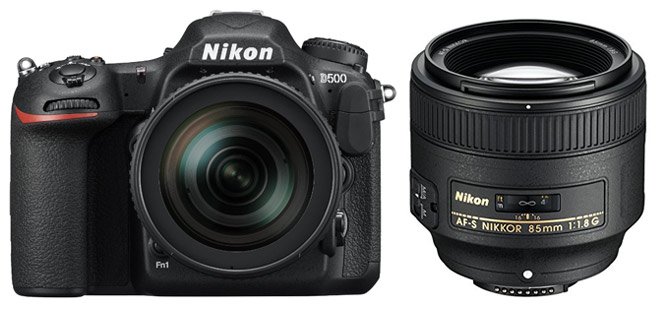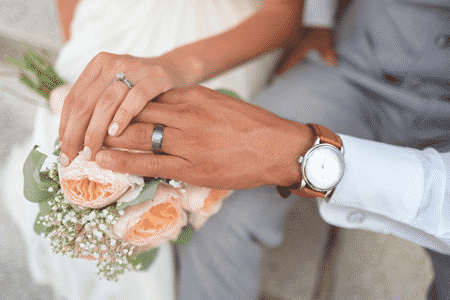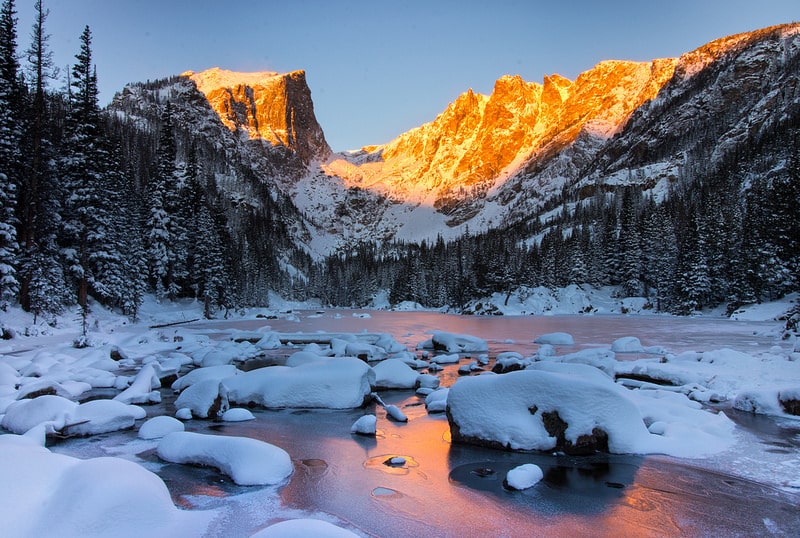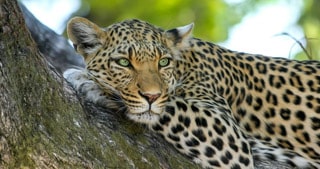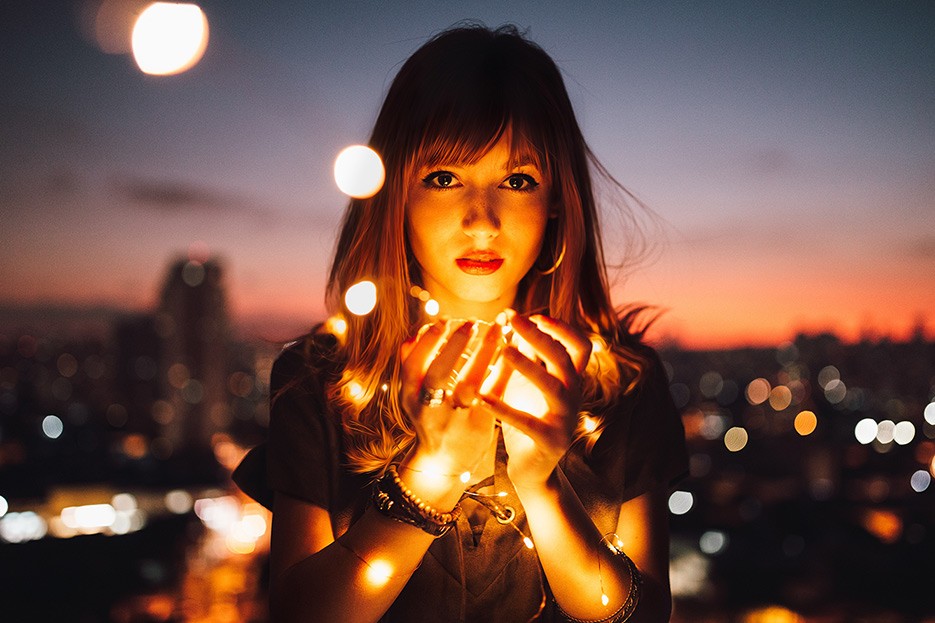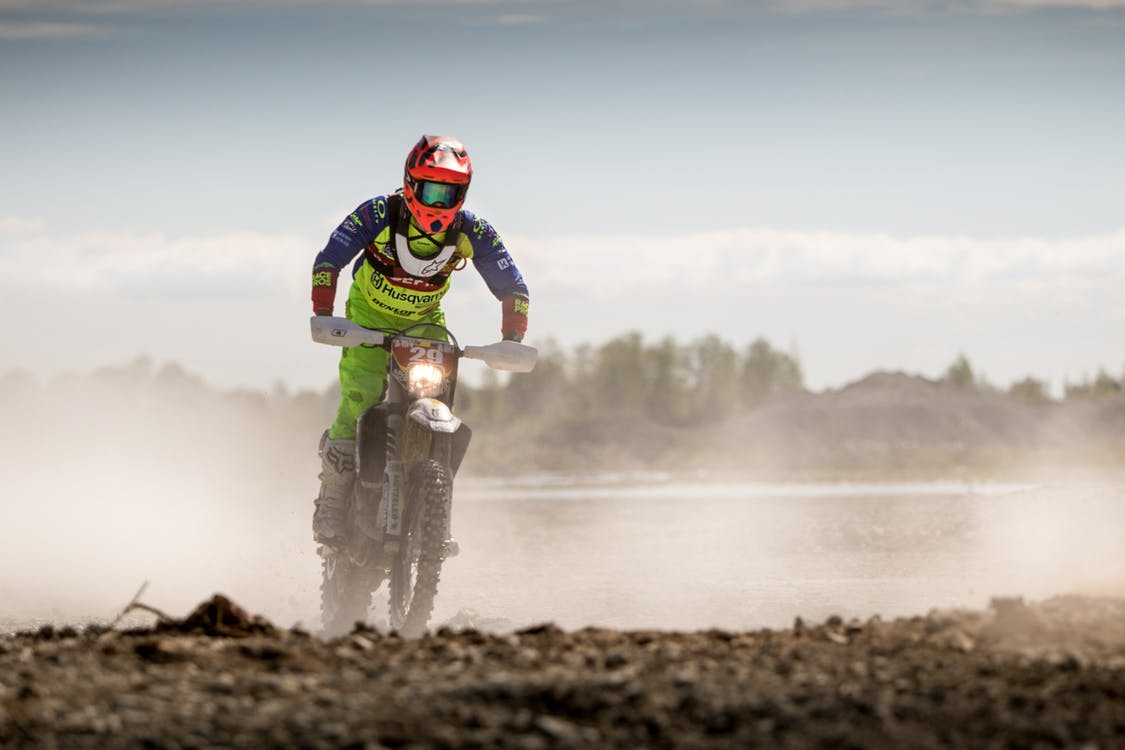There’s no denying that the Nikon D500 is the best DSLR with a DX/APS-C sensor out right now.
20 megapixels, 153-point AF system just like in the Nikon D5, 10 frames per second with a 200 Raw images buffer and 4K video, the camera is worth every dollar.
But see, the better your camera, the better your lenses should be. There’s no point in owning something so good if you don’t get yourself lenses that can show all of those details and allow you to shoot sports, action (low light) efficiently. It’s what the D500 was made for after all.
Table of Contents
ToggleWhat are the best D500 lenses?
First, you have to understand that there isn’t one single best lens, it all depends on your needs and what you currently own. Besides image quality, what also matters is the maximum aperture size, weight, size, price, auto focus, ease of use, build quality etc.
Obviously this guide wouldn’t be helpful if we told you what matters and then not show anything. Below, you will find the lenses we believe give you the most for the money without breaking the bank.
Besides Nikon, our third-party brand lenses come from Sigma, Tokina and Tamron.

Wideangle lenses

Macro lenses

Telephoto lenses

Standard lenses
Types of Lenses:
- Wideangle – Useful for capturing a lot in your scene (usually from 8 to 35mm)
- Standard – Where most photography happens (from 35 to 85mm)
- Telephoto – For subjects far away (85 to 600mm, only a few lenses that go higher)
- Macro – 1:1 ratio that magnifies your subject to real life size (usually from 60 to 180mm)
Wideangle Lenses:
Mostly used for photographing landscape, nature, architecture, indoors, group shots and the sky (day and night).
Standard Lenses:
Perfect for every day stuff, whether you’re taking pictures of your kids or shooting an outdoor event. The 35 to 85mm is a range that’s perfect for people, streets, traveling, weddings, food, you name it. Prime lenses in this range are affordable and have a big aperture so you can easily blur the background; check out the Nikon 35mm f/1.8G if you want to make your subject stand out.
Telephoto Lenses:
These allow you to get really close to your subject, and are great for sports, concerts, wildlife, basically what the D500 was made for. Sure you can move closer to your subject, but sometimes that’s impossible or not worth the risk. The Sigma 150-600mm gives you so much zoom you might even see things you never wanted to know. Telephoto lenses can just as well be used for other types we mentioned though, don’t let the numbers limit your creativity.
Macro Lenses:
Want to shoot bugs, small products, details or just want to explore the world that we don’t usually see? Macro lenses make your subject appear as big as it is in real life.
 The almighty Nikon 200-500mm zoom
The almighty Nikon 200-500mm zoom
Zoom and Prime
- Zoom lenses – Focal length can be changed
- Prime lenses – Fixed focal length, can not be changed
Simply put, a zoom lens allows you to get closer to your subject by rotating the zoom ring (like the 55-200mm that goes from 55mm, everything between, and 200mm).
A prime lens on the other hand is always at the same focal length (for example, 50mm). Quality is usually better and the maximum aperture can be bigger without making the lens huge in size.
List of lenses we recommend for the Nikon D500:
We cover these lenses in depth below, but in case you’re looking for full specifications and reviews, here’s an organized list. Prime and zoom lenses, from widest to longest.
If you decide to buy anything through our Amazon links, you automatically support our work as we receive a small commission and it’s what allows us to write these guides.
Best Portrait/Wedding/Low Light Lenses:
Nikon 35mm f/1.8G AF-S
Nikon 50mm f/1.8G AF-S
Nikon 85mm f/1.8G AF-S
Best Telephoto/Action Lenses:
Sigma 150-600mm f/5-6.3 DG OS HSM
Nikon 200-500mm f/5.6E ED VR
Tamron 70-200mm f/2.8 DI VC USD
Best Walkaround/All-around Lenses:
Sigma 30mm f/1.4 DC HSM
Sigma 17-70mm f/2.8 DC HSM
Sigma 18-300mm f/4-5.6 DC OS HSM
Best Wideangle Lenses:
Tokina 11-16mm f/2.8 Pro DX II
Sigma 18-35mm f/1.8 DC HSM
Best Macro Lenses:
Nikon 40mm f/2.8G Micro
Nikon 105mm f/2.8GIF ED VR
Because the D500 is DX camera, it can accept both DX and FX lenses (FX stands for full frame) so you don’t have to worry about a lens not fitting.
How to tell if the lens is DX (works flawlessly on D500)
Nikon -> If there’s “DX” in the name, it’s good.
Sigma -> “DC” stands for crop cameras, which the D500 is.
Tokina -> Also uses “DX” in their names
Tamron -> “Di-II” made for only crop cameras, “Di” works on all Nikon DSLRs
Best Lenses for Portraits, Weddings, Low Light and General Photography

Best for everything and cheap -> Nikon 35mm f/1.8G AF-S
Best all-around and also cheap -> Nikon 50mm f/1.8G AF-S
Best for portraits and sharpest -> Nikon 85mm f/1.8G AF-S
Prime lenses are sharp as hell, and have big apertures that make the background look blurry. For portraits, weddings and whenever you want awesome bokeh, they’re the best to work with. We’re not saying zoom lenses aren’t sharp, but you have to spend much more to reach that same level of quality.
They’re also cheaper and smaller than zooms around the same focal length, and give you far more value for the money. Not to mention, they’re more compact and lighter because there are less elements inside.
1. Nikon 35mm f/1.8G AF-S DX
The Nikon 35mm f/1.8G is fast, sharp and far from expensive. It’s actually the cheapest Nikon prime lens and is your best choice if you’re looking for a light lens in the normal range.
Thanks to aperture f/1.8 it will make your portrait shots look more professional due to the shallow depth of field and lovely bokeh. Colors and sharpness are also really good for a lens this price. It’s a perfect choice for a whole lot of different styles, from night time, portraits, kids and pets running, nature to traveling and wedding photography.
You can buy it at Amazon or see more reviews here.
2. Nikon 50mm f/1.8G AF-S
Right after the lens above, the Nikon 50mm f/1.8G is our second favorite prime for both newcomers to photography and more advanced users looking for quality in a lightweight lens.
If you often find yourself using the kit lens more or less near 50mm, this lens was made for you. Not only is quality years ahead of the kit zooms, it also focuses faster and lets you go all the way to f/1.8! The 35mm and 50mm prices are almost identical, yet we recommend you to go with the 50mm if you prefer a little bit tighter shots (15mm difference between the two lenses) and want slightly better looking bokeh.
It’s still recommended for the same types of photography as the 35mm above though.
You can buy it at Amazon or see more reviews here.
3. Nikon 85mm f/1.8G AF-S
For wedding, concert, portrait, night time or close sports photography, we recommend Nikon 85mm f/1.8G AF-S because the quality and sharpness are top notch. It’s also relatively affordable and gives you more bang for the buck than the f/1.4 version
There’s just something about 85mm length on both DX and FX cameras, it’s magical for shots of people. The depth of field looks shallow even when stopped down a bit because your focal length is quite long, but obviously shooting at f/1.8-f/2.8 makes bokeh and background look amazing.
Compared to the lenses above it’s not as good for street, tight indoor and walk-around purposes, but is ideal if you can’t always be close to your subject.
You can buy it at Amazon or see more reviews here.
Best Lenses for Wildlife, Sports, Birds and Action Photography
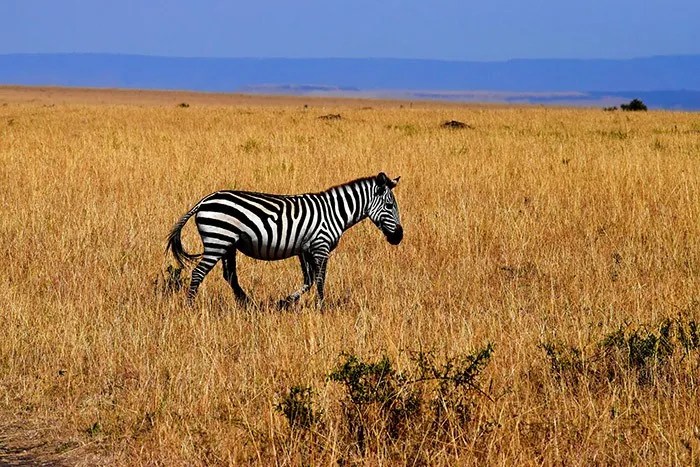
Zoom up to 600mm -> Sigma 150-600mm f/5-6.3 DG OS HSM
Best 70-200mm -> Tamron 70-200mm f/2.8 DI VC USD
Lightest superzoom -> Nikon 200-500mm f/5.6E ED VR
As we said above, the Nikon D500 was made for telephoto photography. The good thing about 1.5x crop factor is that you don’t have to spend so much to get close to your subject, simply because a 500mm lens is equivalent to a 750mm lens just by mounting it on the D500.
If you’re looking for a good price/focal length ratio, the answer will always be a zoom lens. Luckily, Sigma, Tamron and even Nikon now offer their own versions of affordable telephoto lenses with almost the same image quality and sharpness. The main differences are weight and aperture size, but that’s something that depends on your needs.
One thing you need to remember is that going over f/5.6 or f/6.3 means you will need to raise the ISO to around 3,200-6,400 if shooting farily late in the day. These superzooms are not intended for indoor use but if you need to get that one shot and won’t print large, the D500’s high ISO performance is really good.
1. Sigma 150-600mm f/5.6-6.3 DG OS HSM
Want to photograph wildlife, the moon or anything far far away? The Sigma 150-600mm DG OS HSM, released back in 2014, is your cheapest way of ever reaching 600mm with acceptable quality.
It features Optical Stabilization which is a must for something so long, HSM for fast and accurate focusing and also fits on FX models. As far as focusing goes, it’s super quick and doesn’t hunt. You can have the best image quality in the world but if the AF system sucks, what’s the point if everything is out of focus. Oh, the field of view of this lens is equivalent to 225-900mm on the D500. That’s nine hundred! Hmm…the price is also nine hundred bucks, so you’re literally paying a dollar for every millimeter.
Construction wise, the lens feels solid and is something you can use outdoors in tougher situations with no stress.
Anything bad? The f/6.3 makes it unusable for indoor sports, and it’s relatively heavy to carry around at over 6 pounds (1930g). If you’ve got a cheap tripod, you definitely have to buy something that can carry way more weight. Because of the weight you’ll definitely have to rest every hour or so if you’re not used to carrying around such a big lens (assuming you shoot hand-held).
You can buy it at Amazon or see more reviews here.
2. Nikon 200-500mm f/5.6E ED VR
Released in late 2015, the Nikon 200-500mm f/5.6 is Nikon’s answer to superzoom telephoto lenses from other brands.
Image quality and colors wise, it’s almost identical to the Sigma above. Jared Polin (video here) compares it to the Sigma above and finds little to no difference in quality, but Nikon’s biggest advantages are the slightly bigger aperture at 500mm and a lighter weight. You do lose 50mm at its widest length, and 100mm on the far end.
Vibration Reduction helps up 4.5 stops, more or less a standard today and a must for shooting above 400mm. The lens is a little bit more expensive, but if the advantages it offers are important to you, it’s definitely worth it.
You can buy it at Amazon or see more reviews here.
3. Tamron 70-200mm f/2.8 Di VC USD
We used to love Nikon’s 70-200mm zoom, but after trying out Tamron’s the price just isn’t worth it unless you need top build quality.
The Tamron 70-200mm f/2.8 is built very well and feels sturdy as a $1,500 lens should, but we couldn’t find anything better about the Nikon other than better construction if you often shoot in rain and harder conditions and don’t want to risk your equipment. Quality, sharpness and colors are the same, and their Vibration Reduction (VR at Nikon) works flawlessly as well.
70-200mm is ideal for portraits, events, concerts, weddings, sports and even landscape, on both DX and FX cameras.
You can buy it at Amazon or see more reviews here.
Best Telephoto Prime Lenses:
If you’re looking for superior image quality, the ability to shoot even in low light due to bigger apertures, more background blur and faster, more precise auto focus, check out the telephoto primes above.
They’re much more expensive and heavier though, and we only recommend them if you have enough money and have previously spent a lot of time shooting wildlife.
Do you have to get an expensive prime? Absolutely not, these lenses are aimed at photographers who know exactly what they need because they’ve been doing it for some time.
Best Lenses for Landscape, Wideangle, Architecture and Indoor Photography

Best wide zoom -> Tokina 11-16mm f/2.8 Pro DX II
Best but expensive -> Sigma 18-35mm f/1.8 DC HSM
The DX sensor’s biggest advantage is a disadvantage for wideangle photography.
This is why we have lenses specifically made for crop sensors, because many of us use DX cameras for everything, which includes wideangle shots. You can try Nikon’s lens simulator to see the difference between using the same focal length on a DX and FX camera.
Nikon and other third-party companies make super wide lenses with the 1.5x in mind, so when you put them on they’re still wide enough for whatever it is that you require. They’re also cheaper and lighter than comparable FX lenses. The Tokina 11-16mm f/2.8 is our favorite affordable wideangle lens, because it’s still wide when mounted on the D500 (11-16mm acts as if it’s a 16.5-24mm lens, just multiply the numbers by 1.5x).
There is one small positive thing though; wideangle lenses tend to perform worst in the corners, and show most vignetting there. By using these lenses on a DX camera you’re more or less cropping those ugliest parts out of the shot.
1. Tokina 11-16mm f/2.8 Pro DX II
It looks cool, it feels solid, it’s got an f/2.8 aperture and most importantly, gives good results for wideangle photography. The Tokina 11-16mm f/2.8 Pro DX II is a popular choice, mostly for Nikon because their 10-24mm wide zoom is more expensive and slower. No issues with auto focusing or anything on DX cameras.
Not only is the lens good for nature, real estate and indoor photography, the f/2.8 also allows you to use it for long exposure photography at night. It features two aspheric and two low-dispersion elements to reduce the amount of ghosting and flare, a common issue with wider lenses. With all that though, you’re still probably going to see chromatic aberration, but it’s correctable in post processing.
You can buy it at Amazon or see more reviews here.
2. Sigma 18-35mm f/1.8 DC HSM
To have a zoom lens with f/2.8 is awesome. To have f/1.8… that’s just asking for too much. Luckily, Sigma listened.
The Sigma 18-35mm f/1.8 DC HSM is designed for DX cameras like the D500 and gives you a length that’s excellent for any wide to standard situation, even in low light. That includes weddings, traveling (still good as a kit lens), streets, indoor and general photography.
Instead of owning 3 separate lenses that might not even have f/1.8, you’re able to zoom through all in less than a second. Best part, the max. aperture doesn’t get smaller at 35mm. This Sigma fine piece of glass also delivers optically excellent images with top colors and sharpness, and has a HSM (Hyper Sonic Motor) to make it better for focusing on moving targets as well. The only downside is that it’s relatively heavy at 28.7 oz (809g). Price? $800. It’s worth far more though.
You can buy it at Amazon or see more reviews here.
Best Lenses for Traveling, Walkaround, Zoom and Everyday Photography

Best 1 all-around choice -> Sigma 18-300mm f/3.5-6.3 DC OS HSM
Less zoom better aperture -> Sigma 17-70mm f/2.8-4 OS HSM
Better quality, less zoom -> Sigma 30mm f/1.4 DC HSM
An all-around lens does exactly what you think; it’s something you can take with you regardless of where it is that you’re going. A lot of people prefer owning one do it all lens, and sometimes that’s a better choice if you often travel and can’t carry around a bunch of different lenses. When traveling, you might not always have the time to switch between them, and you can also risk getting your gear wet/dusty.
But there’s one drawback; the quality of do it all zoom lenses is not as good as primes. We’re not saying they suck or anything, but their apertures are nowhere near as big and quality differences can be seen when viewing bigger prints. A zoom lens needs to have so many different elements inside, even for moving, that you can’t expect to get the highest quality.
However, we’re simply amazed at how cheap and awesome Sigma’s lenses are for walk-around purposes. Same quality as Nikon, yet way more affordable. For example, check out the Sigma 18-300mm f/3.5-6.3 DC OS HSM. The ePhotozine review that also for more detailed charts, but to give it to you short, the lens is worth every dollar.
And yeah, it does look like the only company we know is Sigma, but we have no reason to recommend something twice as expensive in this category.
1. Sigma 18-300mm f/3.5-6.3 DC OS HSM

Continuing from above, the Sigma 18-300mm f/3.5-5.6 DC OS HSM is the perfect travel lens. Take it out for walks, or use it as your only lens when travelling all over the world.
It does get softer at 300mm as expected, but stopping down to ~f/8 greatly improves sharpness. Unfortunately this means it’s not good indoors at ~300mm because you have to shoot with really long shutter speeds. This can be “fixed” by enabling the Optical Stabilization or using a higher ISO speed, but yeah….noise and all, you know. If only life was that easy. We used to really like Nikon’s 18-140mm lens, but for the same price you don’t nearly get as much value.
There’s no visible color fringing, the chromatic aberration is very well controlled, the only issue as with all lenses in this range is slight distortion at 18mm. For this price, I don’t think it’s fair we complain.
You can buy it at Amazon or see more reviews here.
2. Sigma 17-70mm f/2.8-4 DG OS HSM
If you’re willing to trade less zoom for better quality and way bigger aperture sizes, the Sigma 17-70mm f/2.8-4 offers the most bang for the buck.
For DX cameras you want your all-around lens to stay below 20mm, otherwise it’s just not useful on the wideangle part. You do lose quite a bit at the telephoto end, especially if you’re currently using the Nikon 18-140mm, but it all comes down to what you prefer.
If you find the 18-140mm (or whatever kit you have) to be good enough in terms of quality and weight, you shouldn’t upgrade. However, if you often wish you had f/2.8 and improved optics, and aren’t willing to go over $500, you’ll be happy with it. The Sigma also uses 72mm filters and has a minimum focus of 8.66″/22cm.
You can buy it at Amazon or see more reviews here.
2. Sigma 30mm f/1.4 Art DC HSM
A walk around lens doesn’t always equal a long zoom. Sometimes, all you need is a small, fast prime with excellent optics. The Sigma 30mm f/1.4 has a field of view equivalent to 50mm on the D500, which is an excellent length for day to day stuff, traveling and taking pictures when it gets dark.
Yes, you can’t zoom but in return you get amazing quality, better bokeh, a large f/1.4 aperture and tack sharp shots. Having a fixed lens also forces you to be more creative and you sort of already know what to expect, even before taking a shot. You start moving better, you think more, you take better pictures.Not to mention, you stand out less with a prime lens compared to a superzoom.
You can buy it at Amazon or see more reviews here.
Best Lenses for Macro, Product and Bugs Photography

Best DX Micro Lens -> Nikon 40mm f/2.8G Micro
Cheap 100mm macro -> Tokina 100mm f/2.8 Pro
If you want to look at the world from another perspective, there’s no better way than to use a macro lens. Their glass magnifies the subject so it’s just as big as it is in real life (1:1). If you ever see a lens with ‘macro’ in its name, check the magnification ratio first, if it’s under 1 then it’s not a true macro.
When buying a macro lens, there’s one thing you never have to worry about and that’s sharpness. We couldn’t find a single lens that would be bad here and that includes a ton of third-party options as well.
For bugs and live creatures, longer focal lengths are preferred so you don’t scare them away.
1. Nikon 40mm f/2.8G DX Micro
This macro lens is perfect if you’re not too serious about macro photography, but just want to shoot from time to time. That’s not to say you can’t use the Nikon 40mm f/2.8G Micro as your only lens of course, but it’s the price that makes is such a good deal.
For a macro lens, its focal length isn’t too long, which makes it better for product photography or even as a casual choice for outdoor activities. Forget the term macro and don’t the numbers limit your creativity.
You can buy it at Amazon or see more reviews here.
2. Nikon 105mm f/2.8G IF ED VR II
Our favorite Nikon macro lens is easily the Nikon 105mm f/2.8G VR Micro.
With a closest focusing distance of 1.0 ft (31cm) and Vibration Reduction, it’s much easier to get close up shots without a tripod, especially in low light situations. Sometimes you just want to go out without all that extra equipment and it helps knowing that at 105mm (which is a length where movement can easily cause blur) you can get sharp results even with slower shutter speeds.
The lens focuses internally which means it does not extend as you focus, so it’s a big plus if you’re working with bugs and insects. Quality wise, it’s got ED glass elements and nano-crystal coating to reduce flare and chromatic aberrations, although you can believe us that any macro lens is razor sharp and optically superb. If you don’t need VR you can check out the Tokina 100mm f/2.8.
You can buy it at Amazon or see more reviews here.
| Lenses | Price | Designed for | Year |
| Sigma 30mm f/1.4 Art DC HSM | Amazon | DX | 2013 |
| Nikon 35mm f/1.8G AF-S DX | Amazon | DX | 2001 |
| Nikon 40mm f/2.8G DX Micro | Amazon | DX | 2011 |
| Nikon 50mm f/1.8G AF-S | Amazon | DX+FX | 2011 |
| Nikon 85mm f/1.8G AF-S | Amazon | DX+FX | 2012 |
| Nikon 105mm f/2.8G IF ED VR | Amazon | DX+FX | 2012 |
| Tokina 11-16mm f/2.8 Pro DX II | Amazon | DX | 2012 |
| Sigma 17-70mm f/2.8-4 DC OS HSM | Amazon | DX | 2012 |
| Sigma 18-35mm f/1.8 DC HSM | Amazon | DX | 2013 |
| Sigma 18-300mm f/3.5-6.3 DC OS HSM | Amazon | DX | 2014 |
| Tamron 70-200mm f/2.8 DI VC USD | Amazon | DX+FX | 2010 |
| Sigma 150-600mm f/5-6.3 DG OS HSM | Amazon | DX+FX | 2015 |
| Nikon 200-500mm f/5.6E ED VR | Amazon | DX+FX | 2015 |
Which lens to buy first?

We like keeping things simple, so if you’re unsure what lens to buy first it all comes down to whether your current gear allows you to take pictures like you want.
These are the 4 most important factors you should consider before buying a new lens:
- Better quality
- Better low light performance
- Wider or longer focal length
- Price
You should get a lens when you want better performance at what you’re already shooting (sharpness, length, zoom, aperture etc.), or because you want to take pictures that excite you but are hard to get with current equipment.
Useful Nikon Lens Sites:
Best Nikon Lenses For:
First and foremost, I’m a husband and father. Then professionally I’m photographer, designer, blogger, and Esty store owner. My homebase is near the stunning Wasatch mountains in Utah but I love traveling with my family as part of our homeschooling journey. I also love teaching and helping out others. My faith is one of the biggest aspects of my life and brings be a consistent joy that I haven’t found in anything else. My main blog is BestPhotographyGear.com and I strive to make photography simple for anyone looking to learn or find gear for their individual needs. By nature, I like to study, research, and analyze things and I use that help provide the best advice and reviews I can.

